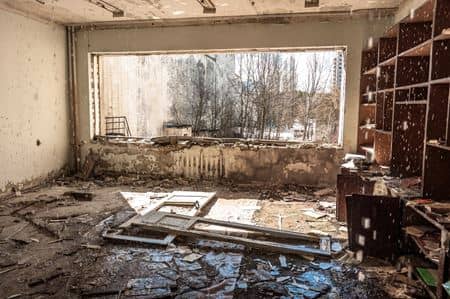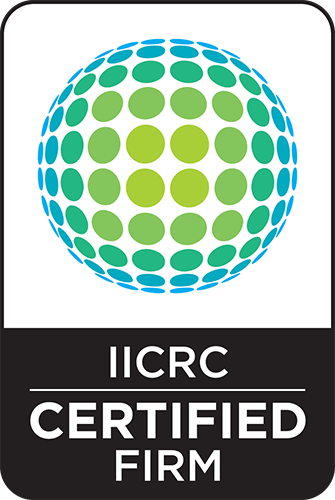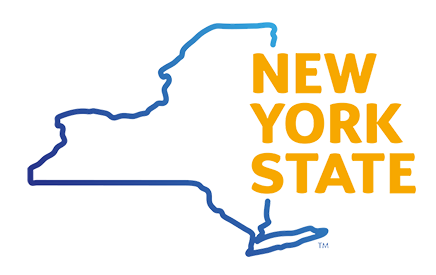What to Do After Water Damage: A Homeowner’s Step‑by‑Step Guide

If a burst pipe, storm runoff, or appliance leak soaked your home, you are not alone. Homes across Freehold Borough and Freehold Township deal with flooding after summer thunderstorms and fall nor’easters. This guide explains what happens next with water damage restoration in simple terms so you can protect your family, coordinate insurance, and bring your space back to normal. When you are ready to act, schedule professional help through our water damage restoration service or call Clean World Solutions at 848-863-6394.
Water Damage Restoration in Freehold, NJ: Why Minutes Matter
Water travels fast. It seeps under baseboards, behind cabinets, and into insulation. In many Freehold homes with finished basements, moisture can wick up drywall and flooring in hours. The sooner trained technicians assess the damage, the better your chances of saving structural materials and preventing secondary issues like odor or microbial growth. Delays often increase the scope of demolition and the time your rooms are out of service.
Stay out of rooms with standing water if electricity is on. Safety comes first. If you smell gas, hear sizzling, or see sagging ceilings, step outside and call for help. Then contact your insurer to start a claim number, which your restoration team will use to coordinate documentation.
The First 60 Minutes: Protect People, Document, and Call the Pros
After everyone is safe, gather the details your adjuster and restoration crew will ask for. You do not need to fix anything yourself, and in many cases, you should not. Do not attempt to remove water or tear out materials yourself, since disturbing soaked materials can spread contamination and may affect coverage.
- Write down when the incident started and when it was discovered.
- From a safe place, take wide photos of affected rooms and a few close‑ups of damaged surfaces.
- List damaged belongings by room so the contents process is easier later.
- If you know the source, note it for the inspector, for example, washer hose, foundation seepage, or supply line.
Next, contact a licensed local team for an on‑site assessment. A dispatcher will ask a few questions about square footage, number of affected rooms, and building materials.
What to Expect During the Restoration Process in Monmouth County Homes
Every home is unique, but most projects move through predictable stages. Understanding the flow helps you plan work, school, and pets around the activity.
1) Inspection and Moisture Mapping
Certified technicians walk the site, take moisture readings, and create a map of wet materials. They check walls, subfloors, trim, cabinets, and ceiling cavities. The team also identifies the water category based on the source, which guides safety and cleaning standards.
2) Stabilization and Protection
The crew isolates affected rooms to keep dry areas dry. They may protect clean furniture with plastic sheeting and set up containment to control airflow. If there is a concern about structural load or a ceiling bubble, they will secure the area before any removal begins.
3) Targeted Removal of Unsalvageable Materials
Only items that cannot be restored are removed. Examples include swollen laminate flooring, water‑logged pad, or drywall that wicked moisture above a restorable line. This controlled approach opens cavities so air can reach the structure.
4) Drying and Dehumidification
Specialized air movers and dehumidifiers run continuously to pull moisture from wood, drywall, and framing. The crew returns daily to adjust equipment, verify readings, and confirm progress toward normal moisture levels for our coastal‑humid climate.
5) Cleaning and Odor Control
Technicians apply appropriate cleaning protocols and address lingering odors. If contents were affected, they will outline options for on‑ or off‑site cleaning.
6) Verification and Handoff to Rebuild
When materials are dry, the team documents final readings and provides a report for your adjuster and contractor. You can then proceed to repairs like paint, flooring, and trim with confidence that the structure is dry.
Want more homeowner learning before the crew arrives? Browse practical reads in our local archive for restoration tips for safety and planning insights tailored to our area.
Mold Concerns in Damp Spaces: When A Mold Removal Team Steps In
Moisture that lingers can lead to microbial growth on drywall paper, framing, or carpet backing. In basements and bathrooms, humidity stays elevated longer, which increases the risk. If technicians find visible growth or musty odor during the inspection, they will follow industry standards for containment and removal to protect clean rooms. That is when a specialized mold removal team coordinates with the drying crew to safely remediate affected materials and verify clean conditions after work is complete.
Call within the first 24 hours if you suspect any damp wall cavities or if odors develop. Early action keeps the scope smaller and shortens the time your rooms are out of service.
Working With Insurance Without the Stress
Many water losses are eligible for insurance benefits, although coverage varies by policy and cause. Your adjuster will want clear photos, a description of events, and the restoration company’s documentation. A good contractor will communicate directly with your adjuster on scope, daily moisture logs, and the final report, which helps your claim move faster.
- Keep a file with your claim number, contact names, and dates of each visit.
- Store digital copies of estimates and drying logs in one folder you can share.
- Ask your adjuster about any special requirements for contents, like itemized lists.
Remember, policy details differ. Coverage often depends on the cause of loss and timing, and requirements can vary by carrier. Your contractor’s job is to explain the technical side in plain language so you can make informed decisions.
Freehold, NJ Specifics: Weather, Basements, and Building Materials
Freehold’s weather swings from humid summers to chilly winters. Quick cloudbursts can send water toward foundation walls, and frozen lines can crack when temperatures drop. Many local homes feature finished lower levels, luxury vinyl or engineered wood, and painted drywall, all of which respond differently to water. Your restoration plan will reflect these details, along with ventilation and insulation conditions unique to your home.
Photograph damage only if it is safe. If a ceiling is bowed or you hear dripping behind walls, keep your distance and wait for the team to assess stability first.
How to Prepare for the Crew’s Arrival Without Doing the Work Yourself
You do not need to start repairs. A little organization goes a long way, though, and keeps the visit focused and efficient.
- Clear a driveway spot for equipment and a pathway to affected rooms if it is safe.
- Crate pets or arrange a quiet space away from the work zone.
- Have your claim number ready and a list of priority rooms you need back first.
- Identify any special items that need extra care, like instruments or heirlooms.
Timeline and Milestones You Can Expect
Small, clean‑water incidents in a single room often stabilize quickly, while multi‑room or basement events take longer because of the volume of materials involved. Your technician will review the plan on day one, including which walls need opening, where equipment will sit, and how many days of drying are anticipated based on readings. Daily check‑ins confirm progress and provide a chance to ask questions about access and noise so your household can plan around school or work schedules.
Keeping Damage From Coming Back
After the structure is dry and the rebuild is complete, consider preventive steps that fit your home and season. An experienced team can point out simple maintenance priorities to discuss with your plumber or contractor, like supply line upgrades, sump system checks, and grading improvements. In older neighborhoods near Main Street or around West Freehold, routine gutter cleaning and downspout extensions can help direct water away from foundations during heavy bursts of rain.
Ready for Help in Freehold?
When water intrudes, fast, coordinated action limits disruption and protects the value of your home. If you need a trusted local partner, Clean World Solutions is here to respond, document the loss, and guide you through each stage of drying and cleanup. You can also start at our home base for water damage restoration in Freehold to explore services and resources.
Prefer to talk to a person right now? Call 848-863-6394 and we will help you plan the next step, coordinate with your adjuster, and set a clear schedule so you know exactly what happens each day.

See Visible Mold? Smell A Musty Odor? Difficulty Breathing?
Contact Clean World Solutions Today!



